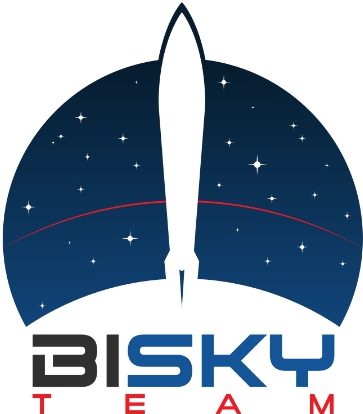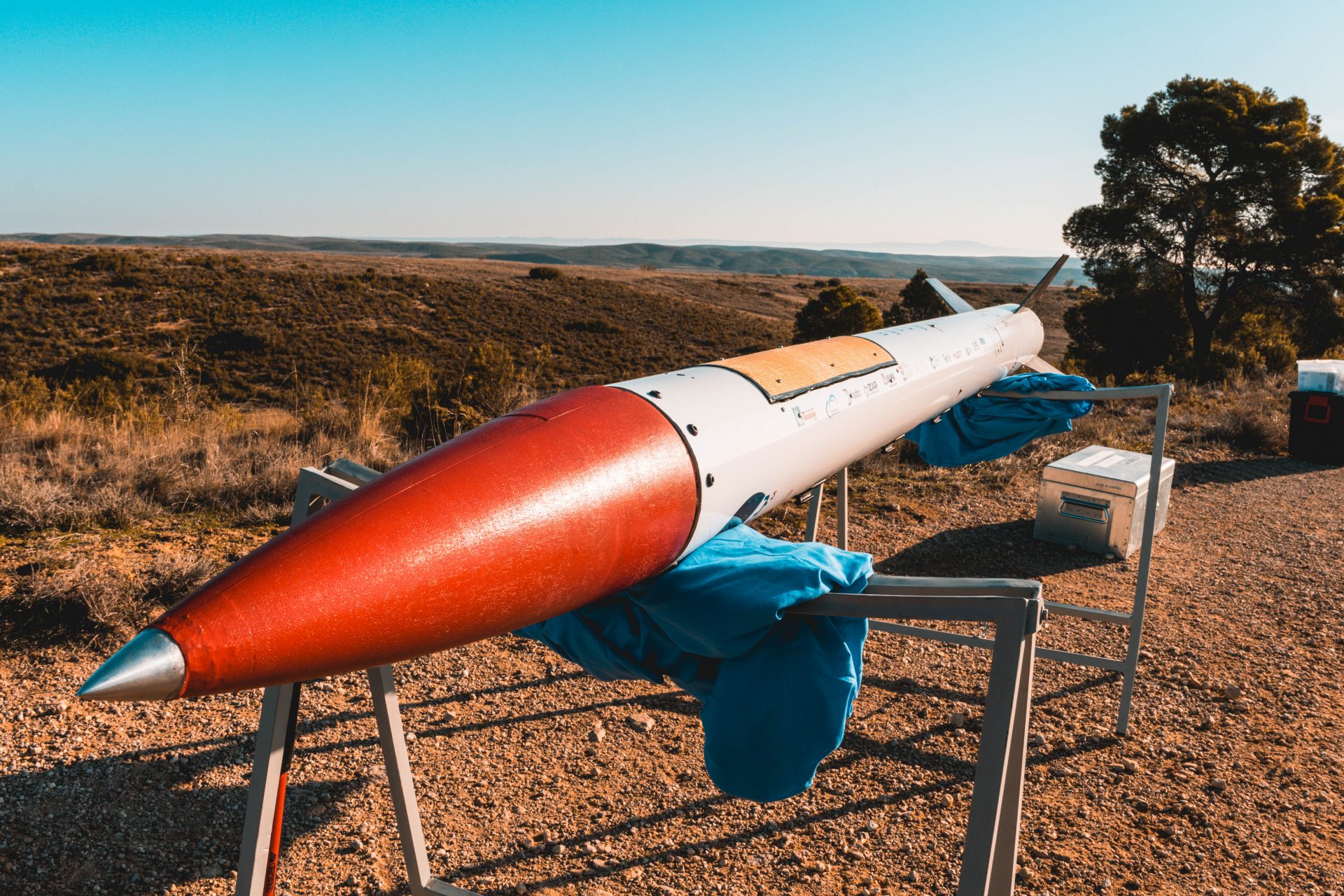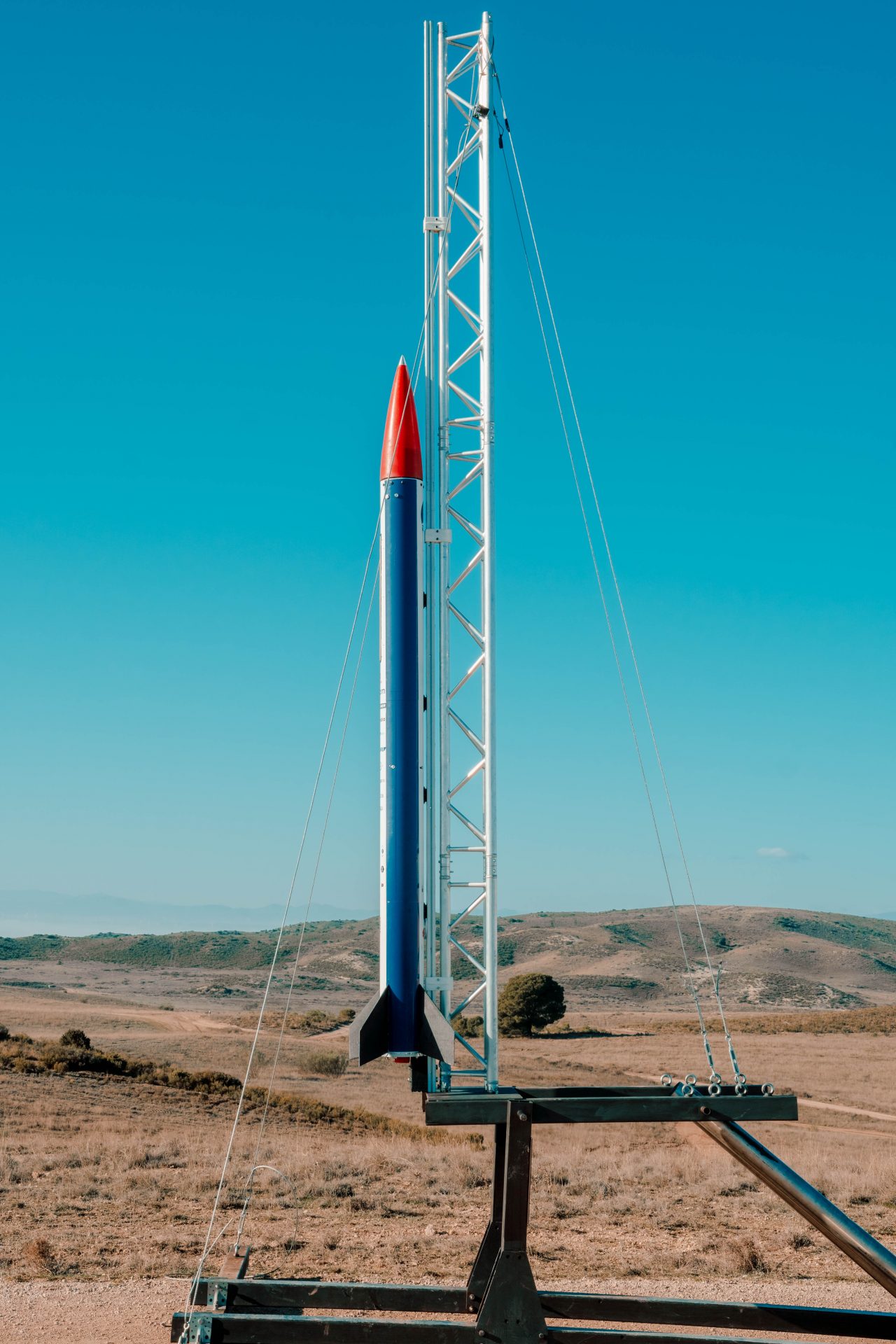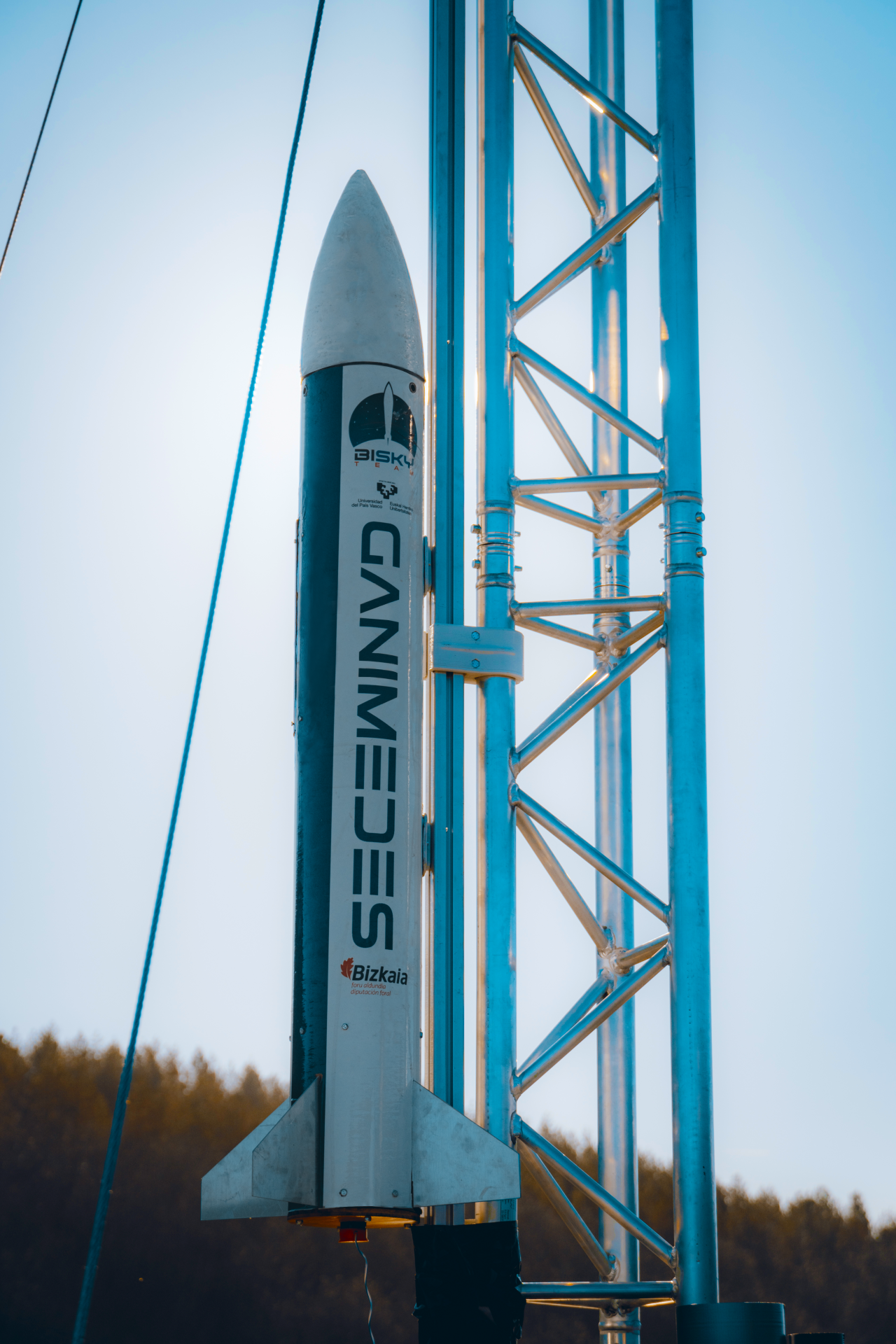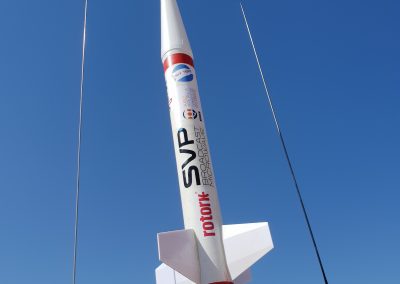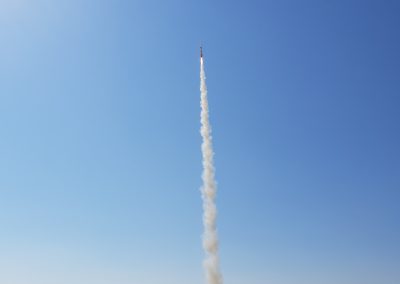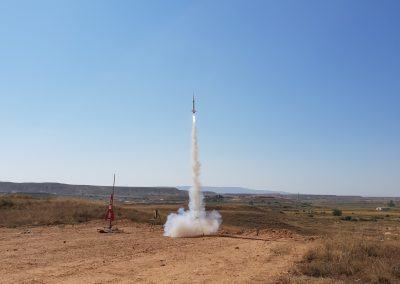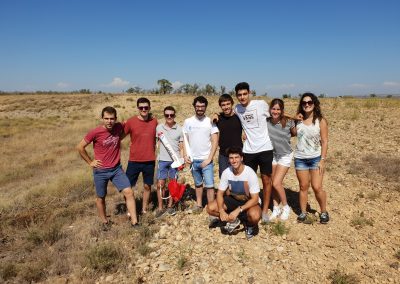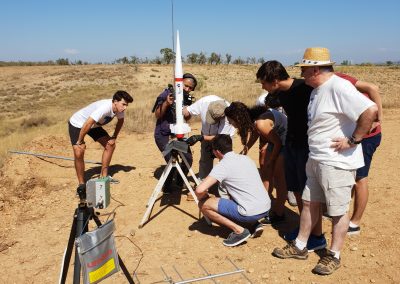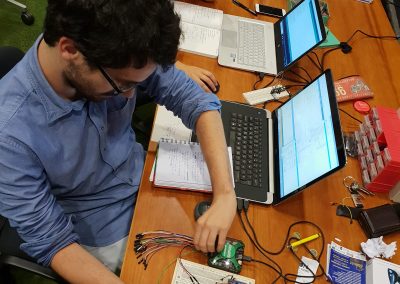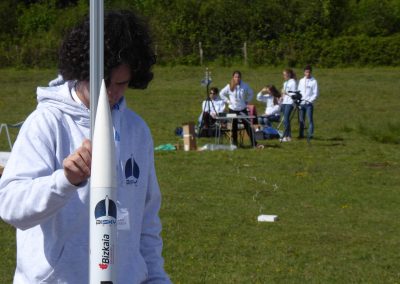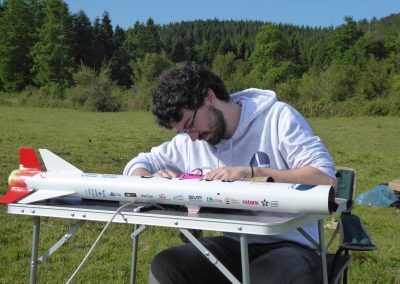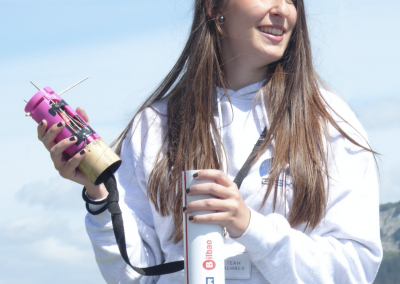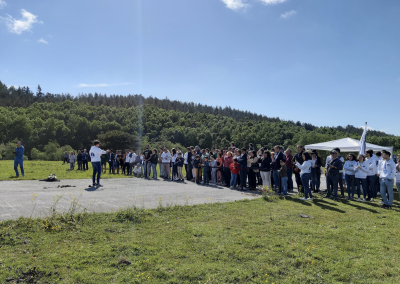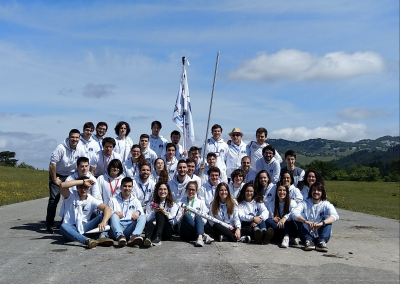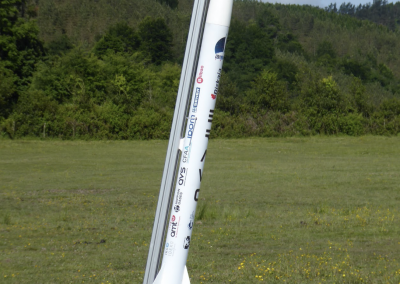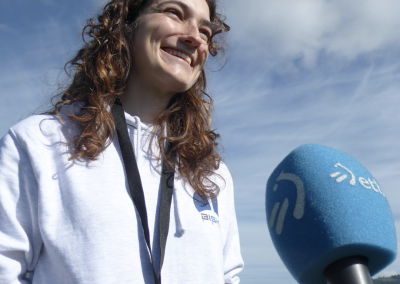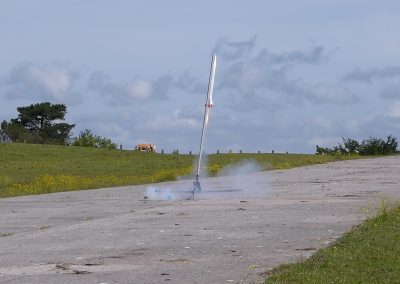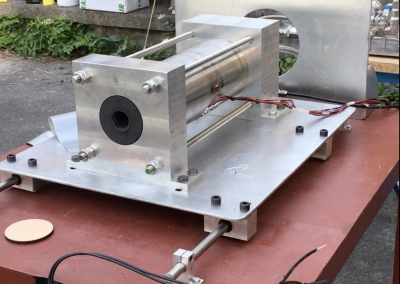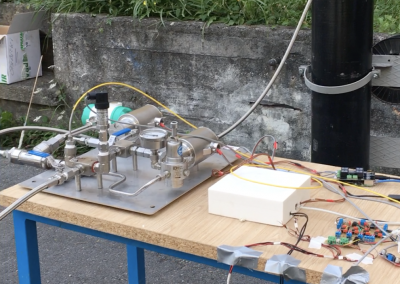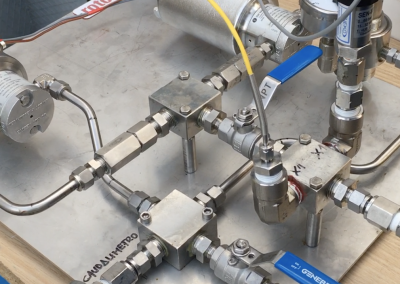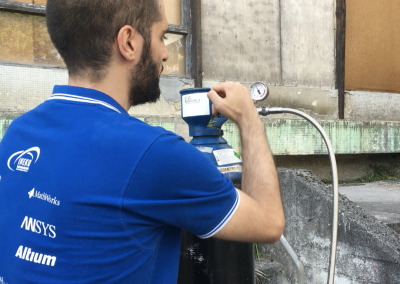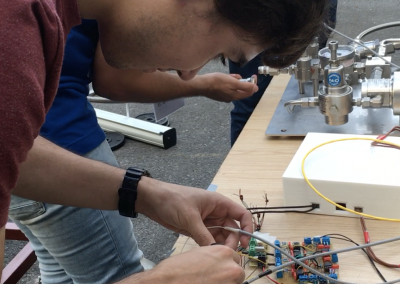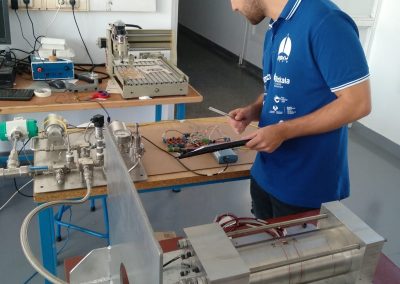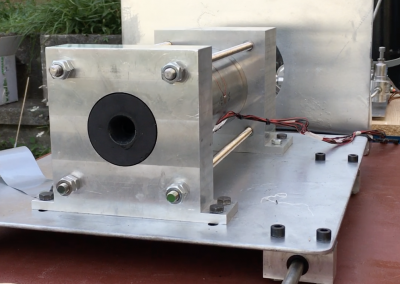Mission
Our mission is to develop suborbital space launchers that reach an altitude of 100km carrying micro-experiments or cubesats.
Advanced technologies
Hybrid technology is used for propulsion, which combines a liquid oxidizer with a solid fuel and allows the re-ignition and the recovery of the rocket. This is also safer than the one traditionally used.
Previous research
In order to develop our own hybrid rocket, two lines of research are being followed: solid combustion rockets, where electronics are tested, and test stands, where the hybrid technology is tested.
GOALS
Research
To facilitate experimentation in «ZeroG», offering a cheap and flexible way to do microexperiments or put into orbit cubesats.
Women in science
We want to be an inspiration for girls, encouraging them to study STEM careers and showing them that they can also be great scientists and engineers.
Education
Cooperation
We encourage collaboration between students from different degrees or institutions, such as Vocational Training Centers.
«A good project, university students oriented by their illusion to realize something tangible, which is also in line with the business of «neo-space». And whose sale in technological forums, media and various channels can place the name of the School very high, even in the Karman line. Every company that knows about the project, joins it.»
2023 PROJECTS
M2
It will be the second generation of hybrid engines fully developed by the team. Designed after M1, M2 will have 10 times more power than its antecesor and its body will be ready to fly with no modification at all. A whole new liquid N2O system will feed the combustion chamber alongside an experimental new ignition system based on methane, will provide 500kg of thrust.
more powerful
- Liquid N2O 90%
- Gaseous N20 20%
More efficiency

Flight desing

???????
PROJECTS COMPLETED
CHARLIE
Charlie is the largest rocket launched by a national rocketry team. This rocket has a height of 3.3 meters and a takeoff mass of 50 kg. Equipped with one of the most powerful commercial rocket engines on the market, it took off on December 27 from the San Gregorio maneuvering field, reaching an apogee of 3,700 meters, beating the team’s altitude mark. During the flight, the rocket exceed 1000 km/h. Once it reached its peak altitude, the rocket descended at a controlled speed using a double parachute system, landing in one piece several minutes later. This rocket is a before and after for the team as it opens the doors to more ambitious launches.
Apogee
Max Speed
Height
Liftoff Mass
IO
IO was our fourth rocket and was launched in March 2022. This rocket consisted of a bar frame, aluminum fuselage, and a team-fabricated fiberglass ogive. Together with Ganimedes, the main mission was to validate a new lateral ejection system for the parachute, which was a complete success.
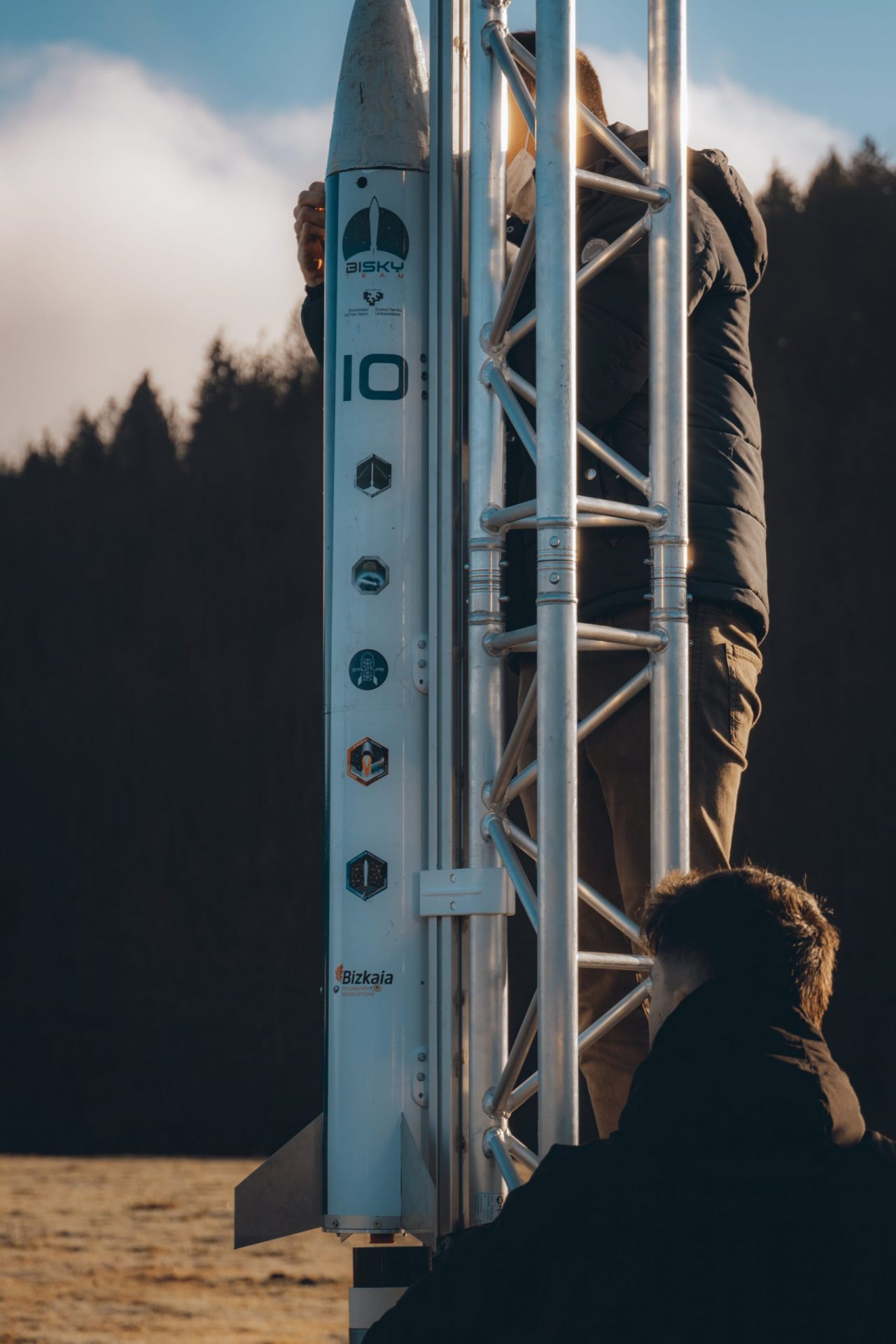
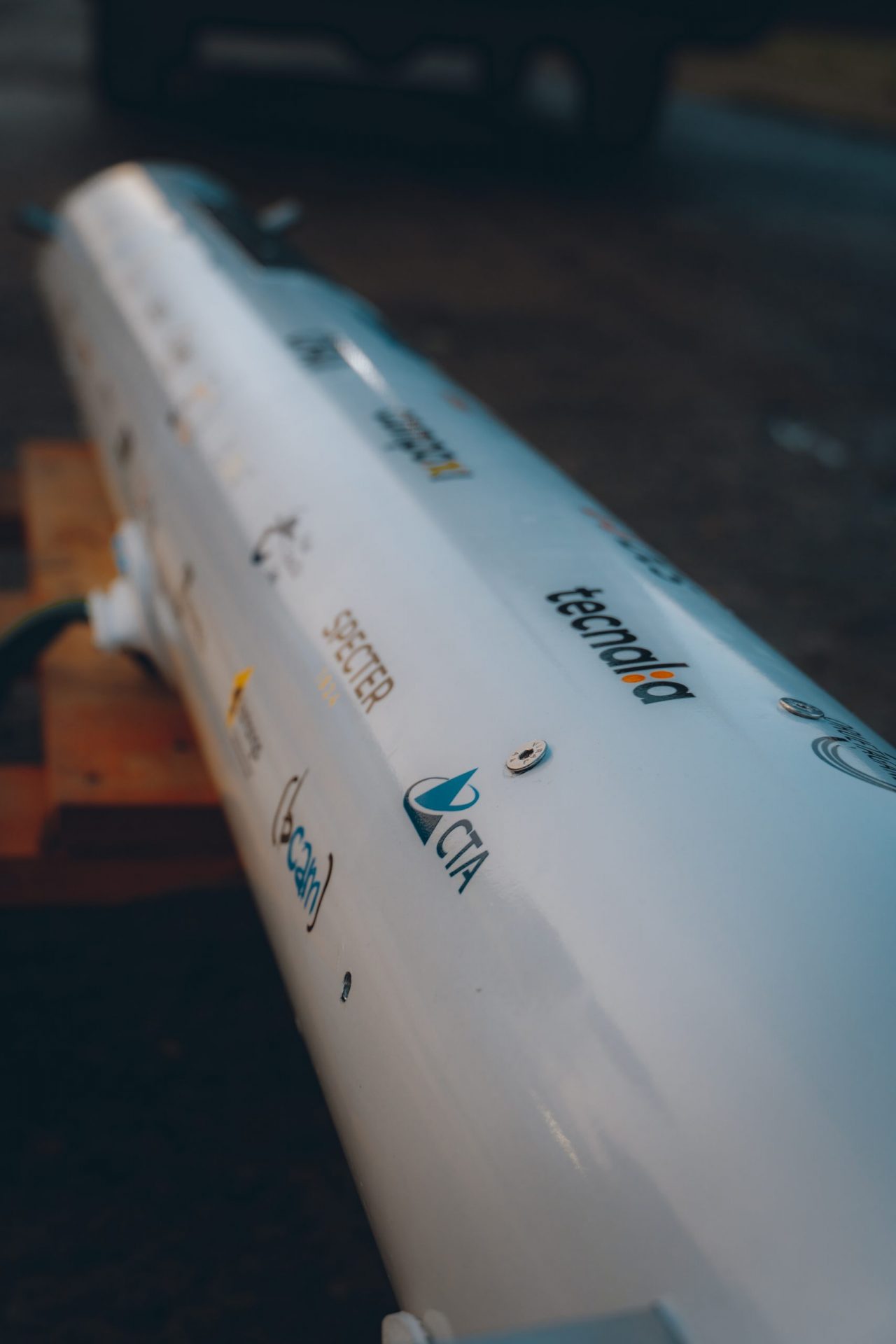
GANIMEDES
Ganimedes was our third rocket which launched in February 2022. This rocket consisted of a bar frame, cardboard fuselage, and a team-fabricated fiberglass ogive. The main mission was to test a new lateral ejection system for the parachute, which was a complete success.
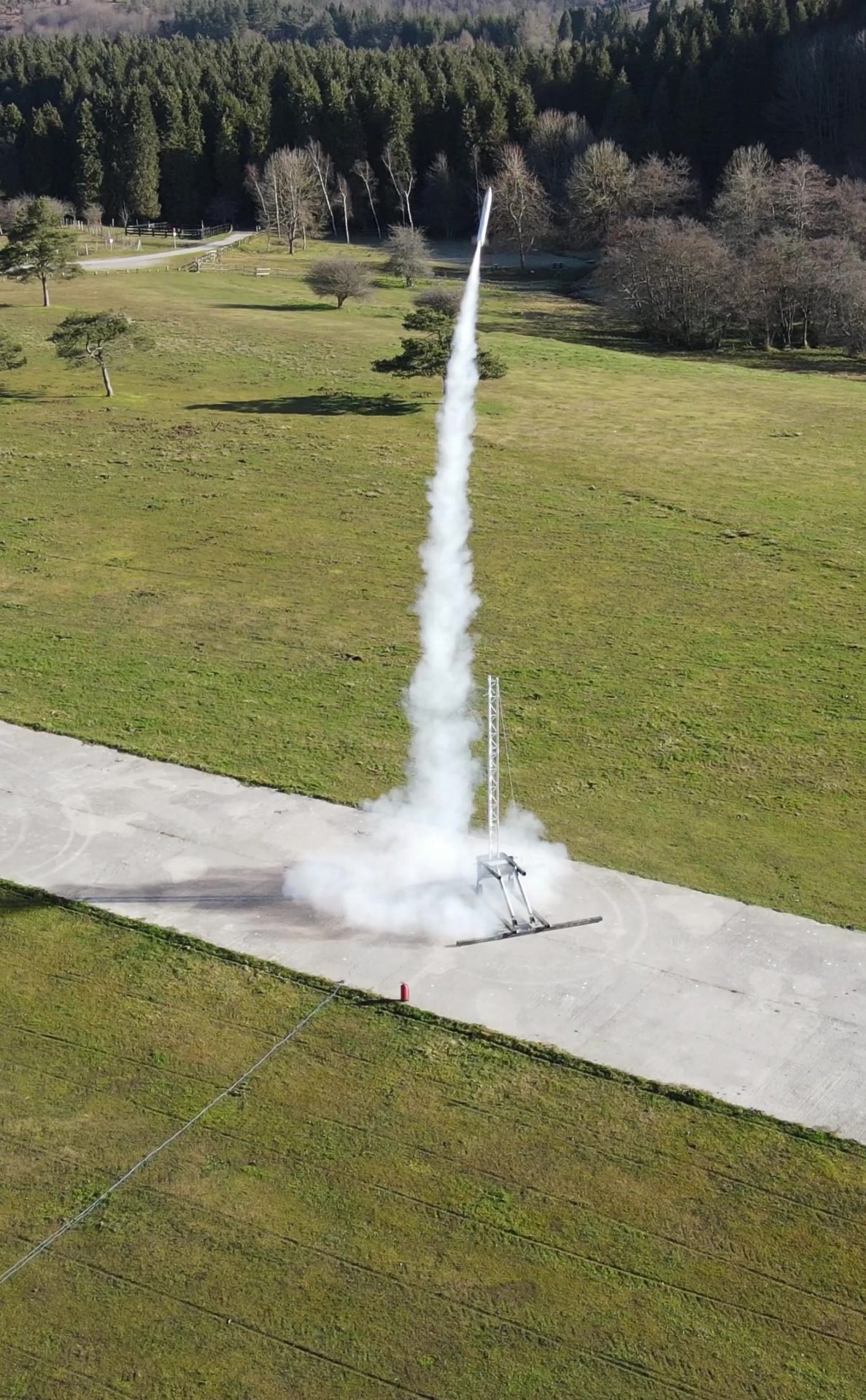
ALPHA
Our first prototype. This solid cardboard rocket had an avionics completely developed by ourselves. We simulated how its flight would be and finally launched it in September 2018. It met all our expectations, going even higher than expected, reaching a 507 meters apogee. The goal of building this small rocket was to test our technology and the acquired knowledge about rocket manufacturing.
Apogee
BRAVO
Our second solid propulsion rocket. BRAVO helped to test our electronics, necessary for the development of the following rockets. During this stage, we also tested the reliability of the flight simulator. BRAVO was launched in June 2019, this was a very important milestone for the team, it really was a breakthrough in the team history.

Apogee
M1
The first engine fully developed by the team. The realization of M1 allowed us to learn how a rocket engine is built and designed. At the same time, the first fuel tests were carried out to properly establish the difference between calculations and reality. It has been reused in several tests as these provide us with very valuable information.
Thrust
FUTURE PROJECTS
COSMOX
COSMOX is our family of hybrid propulsion rockets, we will put into work all the knowledge acquired from previous launches and tests to master the manufacturing of these space launchers, so we can reach an altitude of 100 km.
Goal
To reach the Karman line (100 km high)
Investigación
It will be able to carry microexperiments or cubesats.

